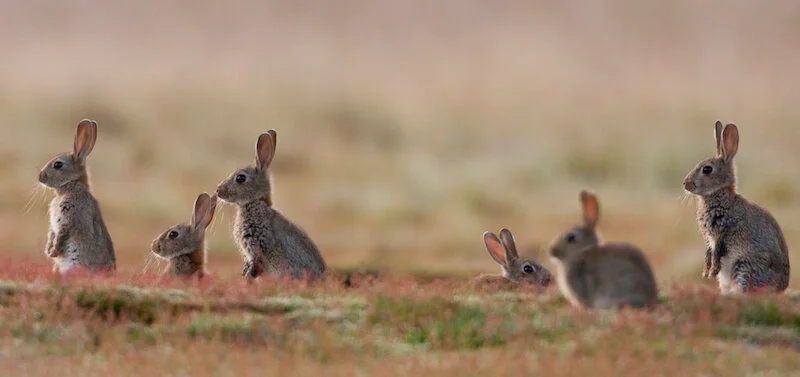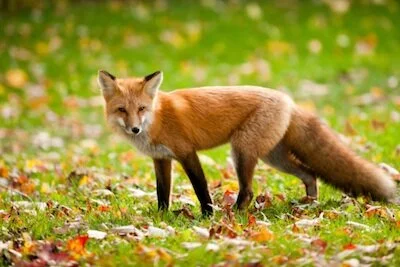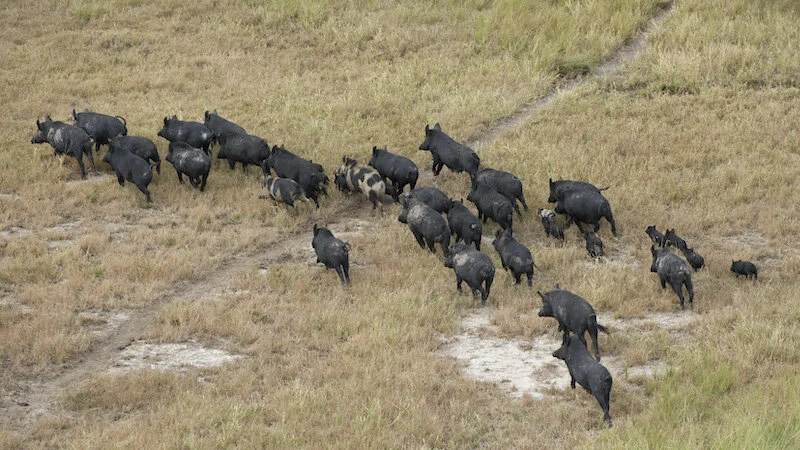A feral animal is a domesticated animal that has escaped into the wild.
Some cats and dogs have become feral animals. They live in the wild and have become pests.
Some animals brought into Australia have become feral animals.
Rabbits and foxes are animals that were brought into Australia. They live in the wild and have become pests
A feral animal is a domesticated animal that has escaped into the wild and now lives there.
Cats, dogs and pigs are examples of domesticated animals that have become feral animals.
An introduced species is an animal that has been brought into a country where it has never lived before.
Some introduced species have become wild animals because they have learned to live in the wild in their new country. In Australia, many of them, such as rabbits and foxes have become pests.
Rabbits
Rabbits were brought to Australia by early settlers who wanted to hunt them ©iStock
Rabbits were brought to Australia in 1788 by European settlers on the First Fleet. A supply of rabbits was kept in hutches on board ships as a source of fresh meat.
In the 1850s people who settled in the new country brought rabbits with them because they enjoyed eating them and hunting them for sport. When the rabbits were first released it was not a big problem. However, because they were able to adapt well to the Australian bush and because they bred quickly, they soon spread throughout the country and became a pest. By 1920 it was estimated that there were 10 billion rabbits throughout Australia.
How feral rabbits affect the environment
Rabbits compete with native animals for food and shelter. Rabbits eat grasses and the bark from trees. Often, they eat so much bark from a particular tree that the tree dies. They also eat the seedlings of trees so that new trees don’t grow to replace older ones. They eat bushes, shrubs and native grasses, which are the food and shelter for many native animals.
In farming areas, the rabbits ate the food of farm animals. They also ate the roots of plants that kills the plant. Because there are not plant roots left in the soil, the wind and rain carry the soil away. Farming land is quickly eroded. The large network of rabbit burrows also breaks up the soil and causes erosion.
Read about erosion on kidcyber here https://www.kidcyber.com.au/erosion
Control of feral rabbits
People have tried to control the rabbits for over 100 years. They have been hunted by people with guns, nets and with other animals called ferrets.
People have tried poisoning rabbits. They put poison into carrots and spread the carrots over the countryside. Many rabbits died, but native animals were also poisoned when they ate the carrots and the bodies of the dead, poisoned rabbits.
Cats were bred and released to hunt rabbits. The cats later became feral are now a problem for the environment. European red foxes were released to control rabbits, but the fox too has become a pest.
European red foxes
European red foxes were released into the wild so that early settlers could hunt them.©iStock
Some European settlers in Australia wanted to hunt foxes as they had done in their own country. So, the red fox was brought into Australia and released into the bush where it could be hunted. It is thought that the first foxes may have been released in Victoria in the late 1840s.
Another reason for their release was that settlers thought that the foxes might hunt rabbits which had become a pest since their introduction into Australia.
The red fox learned quickly how to survive and they bred quickly. Soon they were found in every part of Australia.
How foxes affect the environment
But, as well as eating rabbits, foxes eat small native animals such as bilbies, quolls, possums and bandicoots. They also eat ground dwelling birds such as lyrebirds. Many of these animals such as the bilby, the bandicoot and the quoll are threatened with extinction by feral animals such as the red fox.
In farming areas, foxes kill chickens, ducks and geese. They also prey on new-born animals such as calves and lambs.
Foxes are now common in cities where they live in parks and beside rivers where they prey on small animals including frogs, rats, mice and lizards.
Control of foxes.
Farmers trap and shoot foxes to protect their animals. In some parts of Australia, large areas of countryside has been fenced to keep foxes out to protect native animals. However, foxes can climb fences and even jump over them.
Read about the work of the Australian Wildlife Conservancy
https://www.australianwildlife.org/our-work/feral-cat-and-fox-control/
Pigs
There are millions of feral pigs living in forests, on mountains, near the coasts, in marshy scrublands and in desert areas all over Australia ©iStock.
Domestic pigs were introduced into Australia by settlers who wanted to keep them on their farms for food. Some of these pigs escaped into the bush and became wild or feral pigs.
Feral pigs survive by eating plants and animals. They will eat grass, fruit, earthworms, fish, mice, rabbits and even lambs. They also raid farm crops.
How feral pigs affect the environment
As it searches for food and plants, the feral pig digs up soil with its snout. This can destroy grasses used to feed farm animals. They eat farm crops too. Pigs damage fences and dams, and foul the water in dams and rivers.
The feral pigs are also a danger to native animals because they destroy their habitats and eat grasses these native animals eat. When the native grass, bush and shrubs are gone there is no food left for native animals. Places for them to find shelter and places to protect their young are destroyed. Feral pigs also eat native animals and their young.
Control of Feral pigs
People hunt and kill feral pigs. Feral pigs are savage so hunters trying to control them must be careful. Poisoning has been tried as a way to control the feral pigs. But, the poison is sometimes eaten by native animals. Any animals that eats the body of a poisoned pig will also be poisoned.
Feral pigs carry and spread diseases that can affect humans and other animals.
Read about wild pigs here: https://www.dkfindout.com/us/animals-and-nature/pigs/
Goats
Like the pig, the goat was brought to Australia by settlers who wanted them on their farms for their milk and meat. The goats were also useful because they ate wild scrub and so helped to clear the land.
Australian feral goats ©iSTOCK
How feral goats affect the environment
The feral goat eats almost anything. It eats plants down to the ground and often uproots trees and bushes. Because there are no roots to hold the soil together, it is blown and washed away, and the land becomes eroded.
The goat’s hooves are hard and cloven (the hoof is split into two toes) and as the it walks its hooves break up the top soil, which quickly erodes. Erosion is now a serious problem in Australia
Herds of feral goats foul (make dirty) the water supply of native animals. They also push native animals away from watering places.
Read about erosion on kidcyber here https://www.kidcyber.com.au/erosion
Control of feral goats
To control the numbers, hundreds of thousands of feral goats are rounded up each year to be killed for their meat. The goats’ skins are used to make leather goods such as shoes, belts and clothes.
Goat farmers also use the feral goat to breed with their tame herds. The strong, healthy feral goats have good quality wool and when they breed with the tame goats, the young goats that are born have better wool. Goat’s wool is called cashmere and mohair, and is used to make fine cloth.





